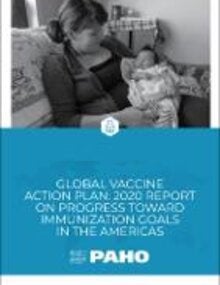ONE HEALTH - Action Track 2
Reducing the risks from emerging and re-emerging zoonotic epidemics and pandemics
Action track 2, “Reducing the risks from emerging and re-emerging zoonotic epidemics and pandemics,” is an integral component of the efforts by PAHO, Member States, and international partners to enhance surveillance, preparedness, and response to pathogens with epidemic and pandemic potential. As most of these pathogens have an animal reservoir and vector, these efforts must be conducted at the human-animal-environmental interface. The Region of the Americas is at great risk for the emergence and reemergence of zoonotic pathogens, and the spillover risk to human populations is ever-increasing because of factors such as the encroachment of human settlements in sylvatic areas, unplanned urbanization, and the potential impact of climate change and more frequent extreme weather events.
Along the human-animal-environmental interface, PAHO works together with Member States and international partners to develop and implement preparedness and response plans, epidemiologic/virologic/genomic surveillance systems, laboratory diagnostic and reference services and their networking, biosafety and biosecurity, and capacities on clinical management and infection prevention and control. In addition, PAHO forecasts and characterizes infection and disease risks, including in potential animal and wildlife reservoirs, and develops evidence-based strategies to predict, prevent, detect, and respond to zoonotic hazards. All these actions are also achieved through expert networks to leverage international expertise and to foster regional knowledge-sharing and collaboration, as well as by providing secretariat support to regional and global initiatives.
Technical cooperation and country experiences
- 14th Annual meeting of the Arbovirus Diagnosis Laboratory Network of the Americas (RELDA), Santo Domingo, Dominican Republic, 15–17 August 2023
- Workshop on clinical management of severe cases due to seasonal and zoonotic influenza, COVID-19 and Respiratory Syncytial Virus in Latin America and the Caribbean (in Spanish), Bogotá, Colombia, 12–14 September 2023
- 1st Meeting of the PAHO Genomic Surveillance Regional Networks (PAHOGen), Brasilia, Brazil, 14–16 November 2023
Virtual trainings
Course on respiratory protection in health-care settings, 2024 (upcoming)
Good practices
- Establishment and strengthening of regional surveillance networks and communities of practice
- Severe Acute Respiratory Infections Network (SARInet plus)
- COVID-19 Genomic Surveillance Regional Network (COVIGEN)
- Arbovirus Diagnosis Laboratory Network of the Americas (RELDA)
- Genomic Surveillance of Dengue Virus in the Americas (ViGenDA)
- Regional Entomo-Virological Laboratory Network (RELEVA)
- Preparedness and Resilience for Emerging Threats (PRET) initiative in the Americas
- RESVIGEN (Respiratory Virus Genomic Surveillance Regional Network)
- Generate and disseminate information on epidemic-prone disease occurrence
- Systematization of national experiences into best practices through regional and ad hoc expert consultations
- PAHO Regional Workshop on Lessons Learned During the COVID-19 Pandemic in the Region of the Americas: Preparedness and Response, Buenos Aires, 16–19 August 2022
- PAHO Regional consultation for the strengthening of intersectoral work in the human-animal interface of influenza, Rio de Janeiro, 14–16 March 2023













